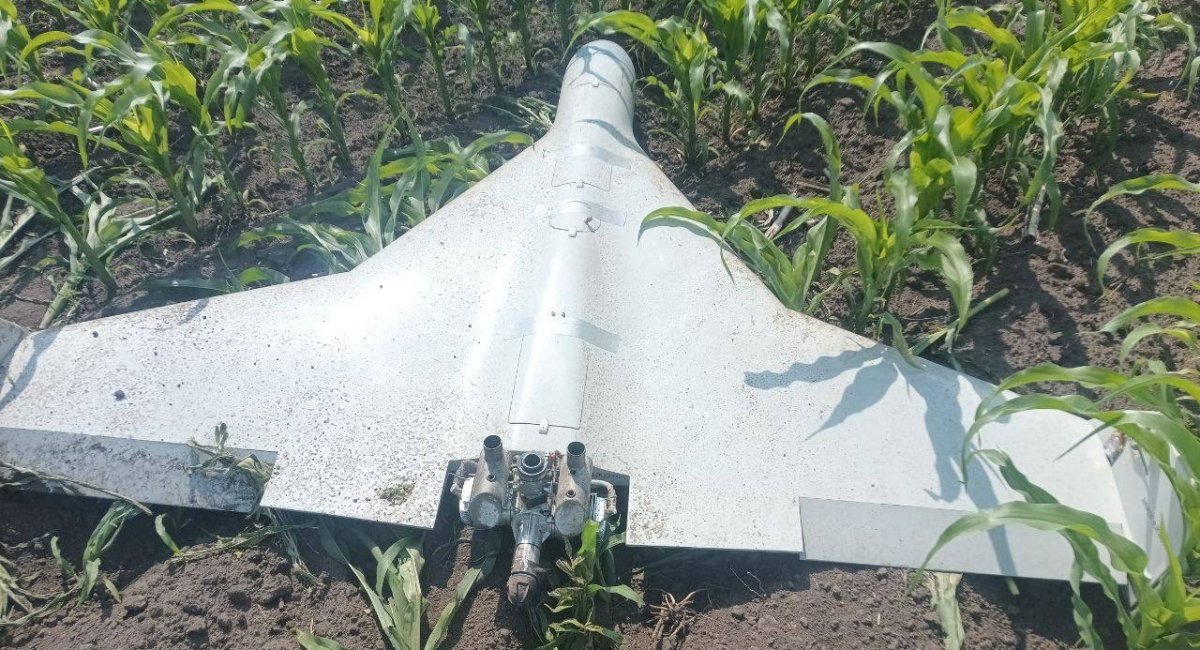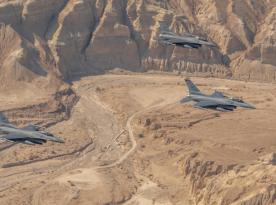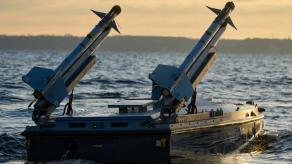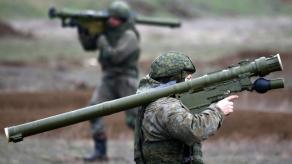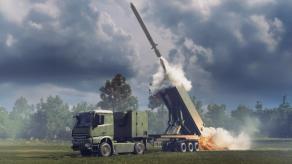The russian occupying forces are reportedly using this new unmanned aerial vehicle on the battlefield for surveillance missions. Although it mimics the silhouette and airframe of Shahed-style kamikaze drones, this UAV functions as a scout rather than a strike asset.
According to Serhii Flash Beskrestnov, a Ukrainian expert in electronic warfare (EW) and signals intelligence (SIGINT), russian forces are now using these drones to scout front-line and border routes for incoming Shaheds. They also use them to detect and monitor Ukrainian air defense activity.
Read more: AI, 4G Modems, Telegram: What’s Really Inside Upgraded Shaheds?

The drone reportedly flies at altitudes ranging from 1 to 3 kilometers. It is equipped with an analog video transmitter capable of transmitting footage over 50 kilometers. The platform is controlled using ELRS (ExpressLRS), a low-latency, long-range radio system popular among civilian drone hobbyists. This highlights its improvised nature.
Footage intercepted from one of these drones and shared by Beskrestnov shows the UAV swaying noticeably during flight, indicating instability. It remains unclear how widely this type has been deployed. However, its emergence reflects a broader russian effort to expand its Shahed ecosystem with supplementary reconnaissance and decoy platforms.
Earlier this week, Beskrestnov also reported on a modified Shahed drone featuring a camera, direct radio control, and rudimentary AI with optical recognition capability. This variant reportedly has a control range of 150 kilometers. That range can be extended using airborne signal repeaters, which makes the system significantly more resistant to electronic warfare and capable of functioning as a heavy FPV drone with a substantial warhead.
Additionally, Ukrainian air defenders recently encountered what appears to be a jet-powered variant of the Shahed during a strike on Kyiv. This version is likely the domestically produced Geran-3. While it retains key design elements of the Iranian Shahed-136, it also incorporates modified components. This indicates russian adaptation.
russia’s reliance on Shahed-type drones is increasing not only in frequency but also in payload mass. In some recent combined strikes, russian forces delivered more explosive material via drones than cruise missiles.
Moreover, russia is reportedly expanding its drone manufacturing capabilities at the Alabuga Special Economic Zone, the main production hub for Shahed and Geran drones. According to reports, russia plans to bring in up to 25,000 North Korean laborers to sustain large-scale UAV production. This further evidence of the regime’s commitment to large-scale UAV warfare.
Read more: With 25,000 North Koreans Sent to Alabuga, More Workers Will Make Shaheds Than Tanks and Tu-160M Bombers Combined




